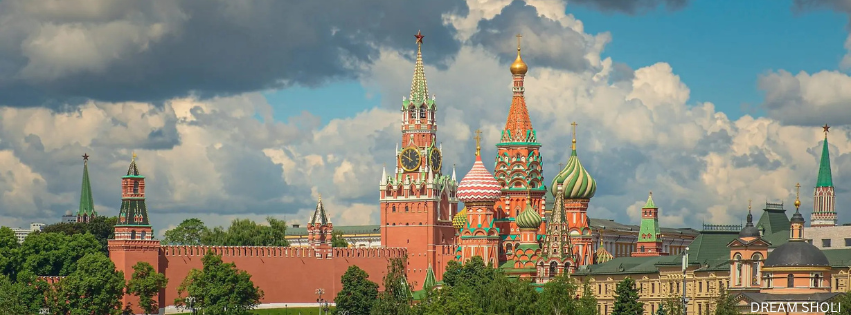
Russia, the largest country in the world, spans Eastern Europe and northern Asia, covering over 17 million square kilometers. With its vast landscapes, Russia includes a stunning variety of natural wonders, from dense forests and tundras to towering mountain ranges and beautiful lakes. This diversity extends to its climate as well, with arctic conditions in Siberia, temperate summers in Moscow and St. Petersburg, and a subtropical climate along the Black Sea coast. Russia is a federal semi-presidential republic, with Moscow as its capital. Moscow is also the largest city, known for its rich history and cultural landmarks like the Kremlin, Red Square, and Saint Basil’s Cathedral. In modern times, Russia plays an influential role on the global stage with a complex and multifaceted political landscape. It is a permanent member of the United Nations Security Council and actively participates in various international affairs. Russia’s economy is largely driven by its abundant natural resources, including oil, natural gas, and minerals, though industries such as defence, aerospace, and technology are also significant contributors. With its breathtaking landscapes, deep cultural heritage, and influential political presence, Russia offers a fascinating blend of old-world tradition and contemporary influence. Its history, marked by czars, revolutions, and vast empire-building, continues to shape the identity and global perception of the country today. Whether exploring the vast wilderness of Siberia, the historic streets of Moscow, or the architectural elegance of St. Petersburg, Russia’s legacy is both impressive and enduring, reflecting its unique position as a bridge between East and West.
Russia’s weather is as diverse as its vast landscape, with climates that range from arctic to subtropical across different regions. In the northern areas like Siberia, winters are extremely cold, with temperatures often plunging to -40°C or lower, and heavy snowfall is common. Summers here are short but can be surprisingly warm, especially in southern Siberia. In the western part of Russia, where Moscow and St. Petersburg are located, the climate is continental, with cold, snowy winters and warm, humid summers. Temperatures in winter often hover around -10°C in Moscow, though they can drop lower, while summer temperatures can reach up to 30°C during heat waves. In the far south, along the Black Sea coast, the climate is subtropical, offering milder winters and hot, sunny summers. Russia’s size and geographical range contribute to its diverse weather patterns, creating striking seasonal contrasts and unique climate conditions across the country.

Russian culture and cuisine are deeply rooted in history, tradition, and regional diversity, reflecting the country’s vast landscape and varied influences. Russian food is often hearty, designed to provide warmth and sustenance through the country’s cold winters. Staples include soups like borscht, a beet-based soup with origins in Eastern Europe, and shchi, a cabbage soup traditionally enjoyed with sour cream. Pelmeni, or meat dumplings, are another iconic Russian dish, often served with sour cream or vinegar, while blini (thin pancakes) are a favorites, especially when topped with caviar or smoked salmon. Russians also enjoy a variety of baked goods, like pirozhki, stuffed with ingredients like potatoes, mushrooms, or meats. Tea holds a special place in Russian culture, typically brewed strong and enjoyed with sweets, while vodka remains a traditional drink often tied to social gatherings and celebrations.
The cultural landscape of Russia is rich and multifaceted, with a deep appreciation for the arts, literature, and music. Russia is the birthplace of many great writers, such as Tolstoy, Dostoevsky, and Chekhov, whose works have left an enduring impact on global literature. In music, Russian composers like Tchaikovsky and Shostakovich are celebrated worldwide, and the tradition of ballet holds a unique and revered status, with institutions like the Bolshoi and Mariinsky theaters drawing international audiences. Orthodox Christianity has influenced much of Russian culture, visible in the iconic architecture of churches with their colorful domes, especially in Moscow’s Red Square. Family and communal gatherings are highly valued in Russian society, with a strong emphasis on hospitality, respect for elders, and maintaining close-knit family ties.
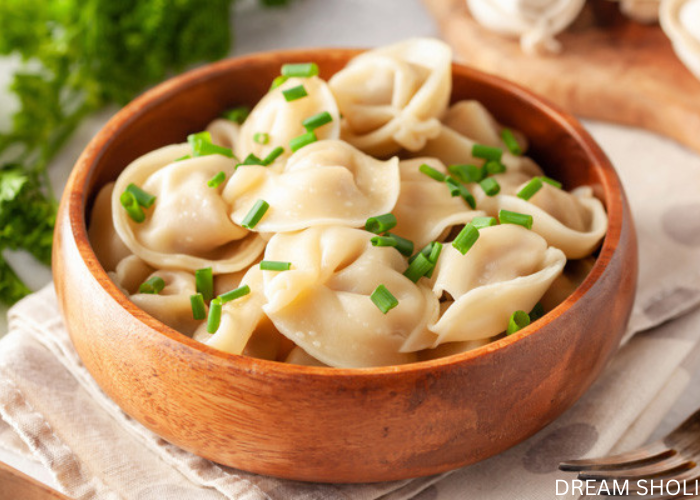
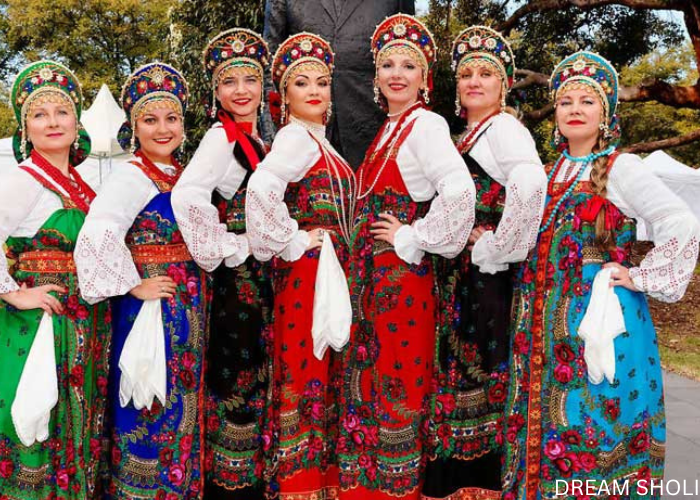
The well-known Russian cities that have international airports are described in further depth below. Travelers to Russia choose these cities because they provide a blend of history, culture, and contemporary conveniences.
Moscow, Russia’s capital and largest city, is a dynamic metropolis were history and modernity blend seamlessly. As the political, economic, and cultural heart of Russia, Moscow is filled with landmarks that reflect its storied past and evolving future. At its center lies the iconic Red Square, a UNESCO World Heritage site surrounded by historic structures such as the Kremlin, Saint Basil’s Cathedral with its colorful domes, and the State Historical Museum. Nearby, the Bolshoi Theatre, one of the world’s premier opera and ballet venues, highlights Moscow’s enduring dedication to the arts. The city is also renowned for its impressive array of museums, galleries, and parks, including Gorky Park and the Tretyakov Gallery, which houses the largest collection of Russian art.
Moscow is served by three major international airports: Sheremetyevo, Domodedovo, and Vnukovo. Sheremetyevo International Airport is the busiest and serves as a key hub for international flights, while Domodedovo and Vnukovo provide additional global and regional connections. Each airport is equipped with modern amenities, extensive transportation links to the city center, and efficient connections to major global destinations, making Moscow highly accessible.
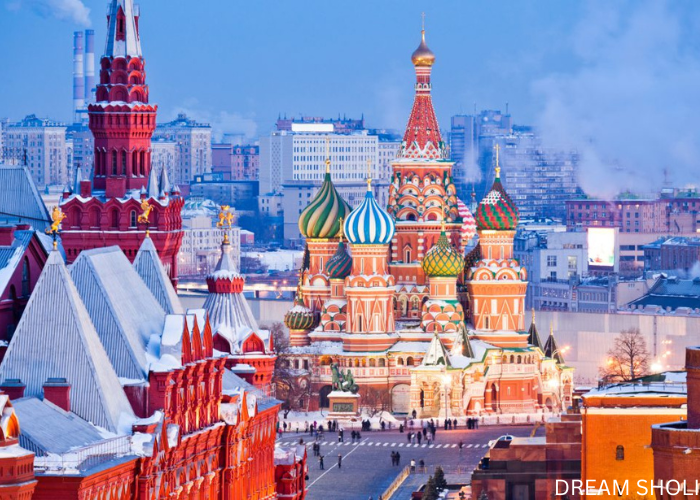
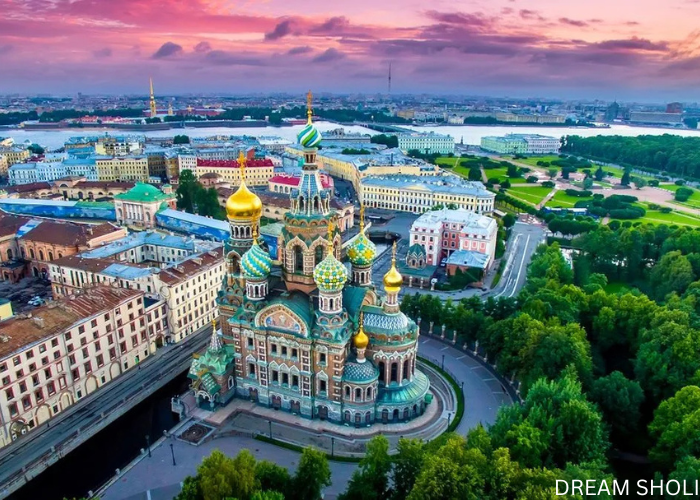
Saint Petersburg, often referred to as Russia’s “cultural capital,” is a city of elegance, history, and artistic heritage. Founded by Tsar Peter the Great in 1703 as a “window to Europe,” it was designed to showcase Russia’s emerging influence and style. Its historic center and majestic palaces, grand avenues, and scenic canals have earned it a UNESCO World Heritage designation. The city’s iconic architecture includes the Winter Palace, now part of the Hermitage Museum, which holds one of the world’s largest art collections, and the stunning Church of the Savior on Spilled Blood with its vibrant, onion-domed facade. Pulkovo Airport, situated about 23 kilometers south of the city center, serves as a vital connection between Saint Petersburg and major European cities, as well as international hubs in Asia and the Middle East. Known for its contemporary design, the airport offers modern facilities and efficient transit, making it easy for travelers to access Saint Petersburg’s rich cultural offerings. The city is also a center of theater and music, with the world-renowned Mariinsky Theatre hosting ballet, opera, and orchestral performances that highlight Saint Petersburg’s place as a global cultural powerhouse.
Vladivostok serves as the Russian Far East’s main hub for trade, military, and maritime activities. It’s the final stop on the Trans-Siberian Railway, making it a bridge between Moscow and the Pacific, and has historically been a strategic naval base for Russia, with its stunning Golden Horn Bay and hills dotted with military fortifications. The city’s unique position and history give it a vibrant, multicultural character influenced by Russian, Asian, and Pacific cultures. Landmarks like the Russky Bridge, which spans Golden Horn Bay, and the Vladivostok Fortress highlight the city’s modern infrastructure and historic significance. The Zolotoy Rog Bridge is another of the city’s architectural icons, offering breathtaking views over the harbor. Vladivostok International Airport connects the Russian Far East with major cities in East Asia, including Tokyo, Seoul, and Beijing, as well as other Russian regions. This access makes Vladivostok an essential link between Russia and the Asia-Pacific, drawing both business and leisure travelers to its dynamic and culturally rich landscape.
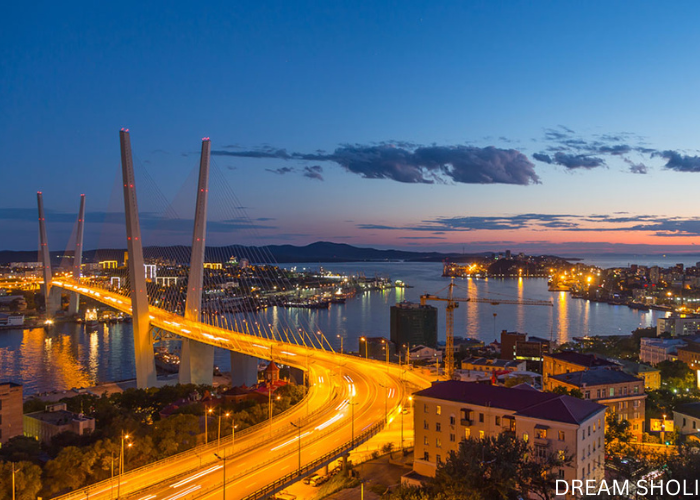

Kazan, the capital of the Republic of Tatarstan, is a vibrant and historic city located along the Volga River in western Russia. Renowned for its harmonious blend of Russian and Tatar cultures, Kazan is an important center of Islamic and Russian Orthodox heritage, and it exemplifies cultural diversity. The city’s architecture reflects this cultural duality, with landmarks like the Kazan Kremlin, a UNESCO World Heritage Site, showcasing both Russian Orthodox cathedrals and Islamic mosques. The iconic Kul Sharif Mosque and the Annunciation Cathedral within the Kremlin walls are prime examples of Kazan’s architectural and religious fusion. Kazan International Airport (KZN) facilitates connectivity for visitors from across Russia and select international destinations, making it a convenient gateway for travelers drawn to the city’s rich cultural offerings and historical charm. Kazan’s mix of history, modernity, and multiculturalism makes it one of Russia’s most intriguing and welcoming cities.

Explore the world effortlessly with our tailored travel packages. Let us handle the details while you create unforgettable memories.
Copyright 2024 Dream Sholi